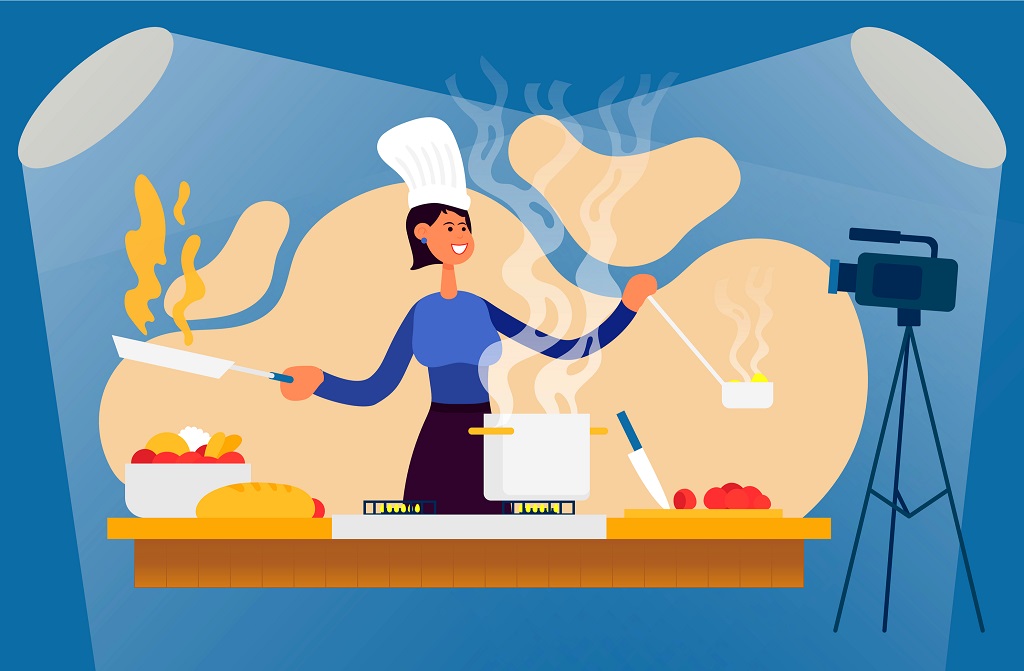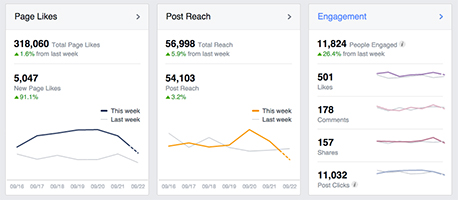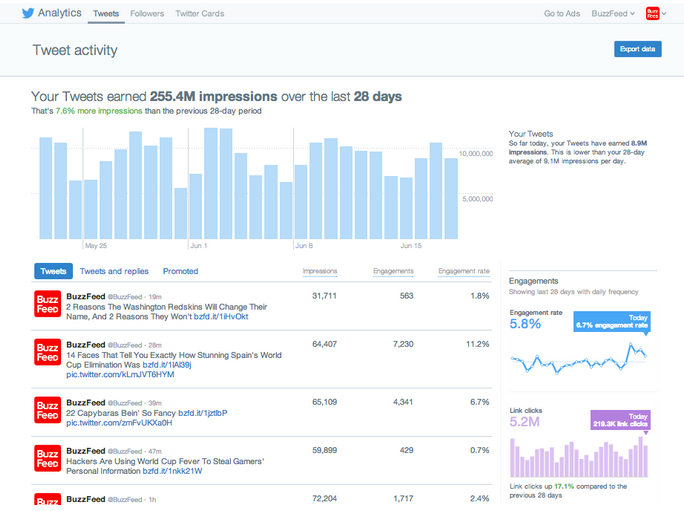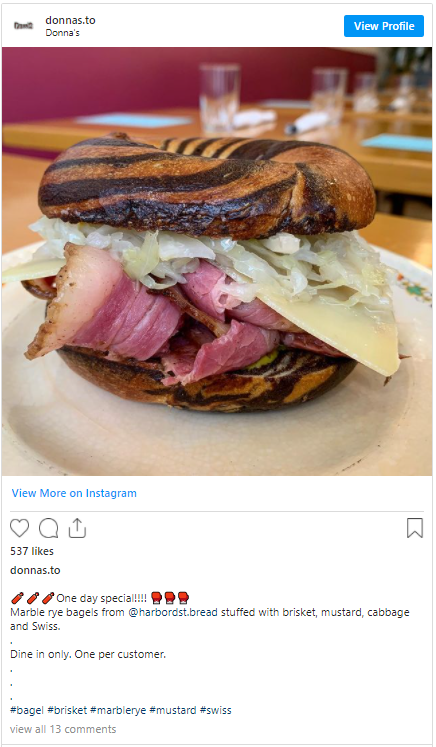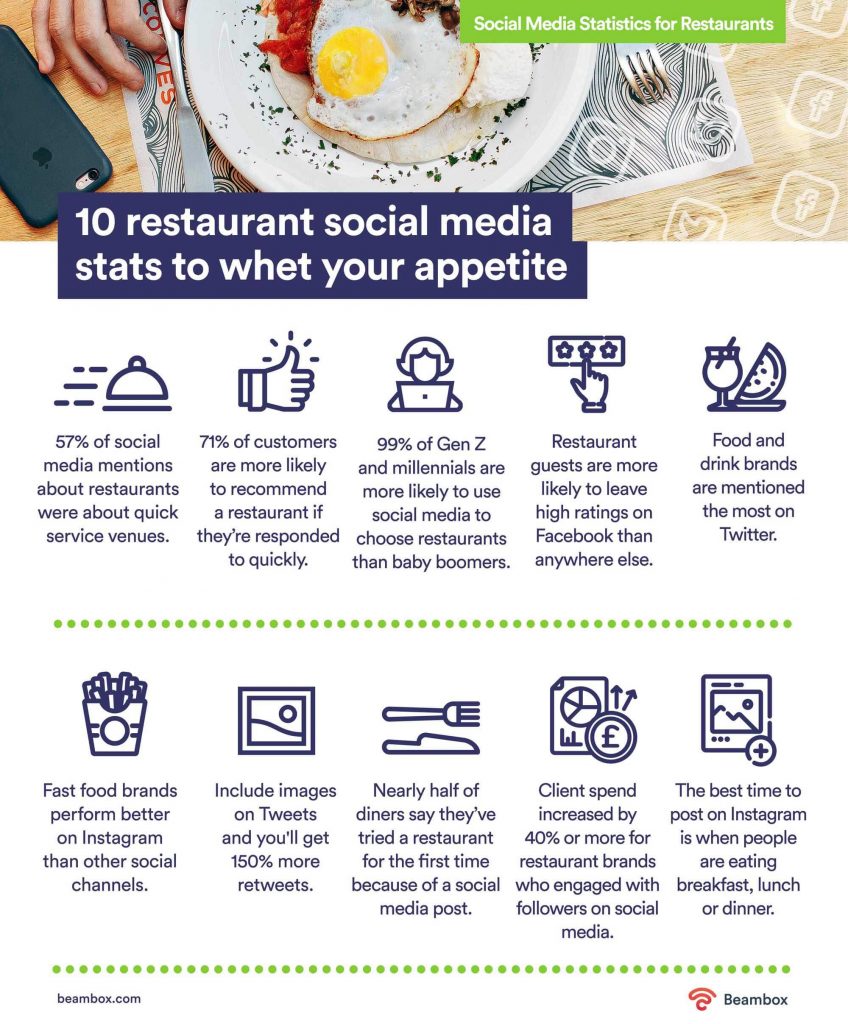If you’re thinking of incorporating social media marketing into your restaurant marketing plan, you’re in for a treat!
Not only is social media a great way to connect with your customers and build relationships, but it’s also a great way to drive traffic to your restaurant.
Regular readers who have been in synch with Blink Co.’s awesome blogroll, know that we have talked about all kinds of restaurant social media marketing examples.
In this article, we’ll show you how to optimize your social media profiles for restaurant marketing plans, and guide you through the most effective methods for promoting your business online.
So whether you’re just starting out or you’re already a seasoned pro, we’ve got you covered!
Let’s get to it…
Marketing For Restaurants
There is no doubt that marketing for restaurants is important today.
In fact, it has become one of the most essential elements of a business’s operations.
Why?
Because attracting diners and keeping them coming back isn’t just critical for survival. It’s also responsible for recouping the investment in new menu items, better decorating and branding, higher staff retention rates, and more.
So what kind of marketing strategy for restaurants should businesses adopt in order to stay competitive?
There is no one-size-fits-all answer to this question, as the best marketing strategy for a business will vary depending on its specific needs and circumstances.
General Tips On Effective Marketing For Restaurants
However, some general tips that may be helpful include:
- Creating effective content (whether it’s blog posts, social media content, or video clips).
- Conducting market research in order to identify which areas of the market are growing fastest.
- Developing innovative advertising campaigns that appeal to target consumers.
Social Media Strategies For Restaurants In 2022
Social media is one of the most important marketing tools that restaurants can use to reach their target audience. In order to ensure the success of social media strategies for restaurant, it’s important to take into account a few key factors.
1) Research your target audience.
What are their interests and habits? Do they frequented certain types of restaurants in the past, or do they have an affinity for particular cuisines?
Knowing this information will help you create content that is relevant and appealing to them.
2) Choose the right platforms and channels for your business.
Facebook, Twitter, Instagram etc., all have different strengths and weaknesses when it comes to reaching your target market.
Prioritize which platform best suits your brand and mission statement – after all, if people aren’t seeing your message on social media, then you’re doing something wrong!
3) Stay consistent with your messaging across all channels.
Make sure that the tone of your posts remains positive and engaging so that customers don’t lose interest quickly.
And last but not least: never stop promoting your restaurant! It’s always important to stay visible in people’s feeds so they continue coming back
What’s The Most Important Aspect of Restaurant Social Media Marketing?
If it has to be summed up in few words, we’d say it’s ‘Data-driven metrics’. Do you know why data is important for social media marketers, regardless of whether they are working in the food industry or anywhere else for that matter?
Data gives you accurate insight on the type of restaurant social media content, which brings in more content. You can also double down on customer engagement trends, their likes and dislikes related to the food-related content among many other things.
From the perspective of restaurant social media marketing, there are plenty of integrated solutions to start with:
-
Facebook Analytics/ Insights:
It’s a simple tool to get a detailed overview of traffic stats, user engagement, and how well a post performed during a given time period. You can also delve down into further details as per demographics, user age groups, etc.
-
Twitter Insights:
Another great tool for food business restaurant owners who’ve got their official profile setup on Twitter. Even if you are not running any paid campaigns, Twitter insights are more than just a handy tool to monitor user trends.
For high-engagement pages, it is important to see which Tweet brought in the most reshares, engagement, and other variables. This data can act as a pivot point to restructure and reshape the content from a long-term content relevancy perspective.
-
Instagram Analytics/ Insights:
Whether Instagram is used as a paid medium for running restaurant social media marketing campaigns, or free ones, it serves multiple purposes.
Since food businesses are highly active on Instagram due to visual aesthetics, it’s important to track and monitor the posts that brought in the most engagement. Check to see what type of food shots went viral in different audience groups etc.
Since food startups are strapped for cash during the early stages of their business, they don’t have to spend money on paid social media marketing campaigns. One can do wonders through organic marketing to get a know-how of how to eventually convert traffic into paid customers through free tools for the time being.
Here are some additional numbers to highlight the importance of restaurant social media marketing:
- Almost 75% of users purchase products and services based on what they see on different social media platforms.
- Food lovers are willing to pay up a premium percentage for reservations, and special menu dishes if they are made to believe that the restaurant is actually worth the shot.
- 84% of users rely on reviews shared by trusted social media members, groups, and communities before buying goods/services for the first time.
- A vast majority of users admit that their purchase decisions are based on user buying trends and recommendations on social media platforms.
5 Awesome Things to Know about Restaurant Social Media Marketing:
If you haven’t explored the social media marketing realm for your business, now might be the perfect time to get started.
1. Restaurant Social Media Profile Authenticity:
There are regular business profiles, and there are verified social media profiles for a handful of businesses.
As a food aficionado, which type of profile do you feel secure when it comes to purchasing decisions? Obviously, we’d want to buy food, goods, and services from verified businesses because they have a sense of authenticity.
To get started on getting verified, you don’t have to do a lot, except for setting up your profile properly. The best way to do that is by inputting complete information on Facebook, Twitter, and Instagram.
For food businesses, Instagram and Facebook profiles are highly recommended to be set up with complete and proper information. However, it doesn’t “hurt” to have a verified Twitter account as a food business.
Make sure that your current business address, short, but catchy business description and a link to your official restaurant website are in your social media profile.
Secondly, don’t hesitate in adding the aforementioned information to your Google Maps business profile. Although by default, Google should be able to pick up your business, you can also tweak your profile as a business owner to respond to customer reviews, engage with potential clients and add some amazing food shots to the reel.
2. Use of Proper Social Media Monitoring Tools:
Just, as we mentioned earlier, social media monitoring is important because it helps you to break down for several reasons. For restaurant social media marketers, the use of such tools is important because it helps to pinpoint the post trends, demographics, reputation monitoring, etc.
Through free integrated analytics and insights tools, you can see what type of content is bringing in more traffic and vice versa. If something has been on your newsfeed roll for a while, and it’s not performing well, you can see whether you’re marketing the content to an audience group that’s not within your area of services, demographics, and vice versa.
In this order, you can also use a reputation management system to create alerts about your restaurant brand name. For instance, Google Alerts can be set up for your business name to get an email notification whenever someone posts something about your restaurant. Many businesses use such systems to address fake reviews posted on different websites by competitors or disgruntled customers.
As a food business owner, you need to reply to such reviews through your business profile. The action, alone, exudes genuine concern for the reviewers, and your ability to improve your service standards if something is lacking on your end.
3. Use of Powerful Imagery:
Use Instagram and Pinterest’s newsfeed reel to your advantage by posting awesome food order menu images.
You don’t have to hire a professional photographer to take the snaps, as you can do so yourself. Make sure that you have added your brand name through a unique hashtag followed up with something quirky.
Likewise, if your restaurant is becoming increasingly popular, don’t hold back users from posting their content on your social media profile page. UGC (*User Generated Content) is a free form of restaurant social media marketing, where you don’t have to spend a dime on word of mouth popularity factor.
After all, great pictures are worth a thousand words.
4. Schedule Posts Around Upcoming Local Events:
This one goes for all the mobile food business owners who are struggling to get more customers through restaurant social media marketing.
Do Facebook and Instagram search for upcoming events within your local vicinity. You can also use broad-spectrum searches for upcoming public get-togethers, events, or anything that has to do with something within your city, or in another city.
All you need to do is create a post about moving to the venue location with some extra hot tasty treats. Even if you aren’t lucky with user engagement, you can be damn sure about attracting all sorts of locals to your food stall.
Don’t forget to hand out business cards, or flyers with your online food order menu with clear mention of your mobile business’s Facebook, Instagram, and other social media accounts. Rinse and repeat enough times, and you will begin to notice reviews, user engagement trends, and Likes coming your way.
You can also create Facebook events to send notifications to your existing page fans about your upcoming plans etc.
5. Find Your Food Business Customers The Right Way:
If you are already using restaurant social media tools for monitoring purposes, you will know that many patrons traveling to different locations ask for local stops where high-quality food is available.
You can identify such posts and queries by going through your social media monitoring tools for such posts. Make sure you are reaching out to potential customers by either replying to their queries or presenting them with an offer they can easily take.
Also, doing a username search allows you to filter through the potentially bogus, spammy accounts you have on your social media pages and only reach your legitimate customers.
Here’s the Bottom Line… It’s a Never-Ending Process!
Restaurant social media marketing is an ongoing activity.
How does digital marketing for restaurants make such a big difference?
Well, it not just increases sales but also brings in more customers and new customers.
The cost of getting into digital marketing is almost zero so you should definitely consider this option next time
If you have the monetary resources, go ahead and hire a full-time marketing manager. He/she will set you up with your social media profiles, YouTube channel, and many other tools to kill your social media game like a true professional.
If you don’t have the resources to get “hired” help, create a social media content calendar and post regularly. Eventually, you will bring in enough customers to help you scale your food business through paid advertisement and other platforms.
